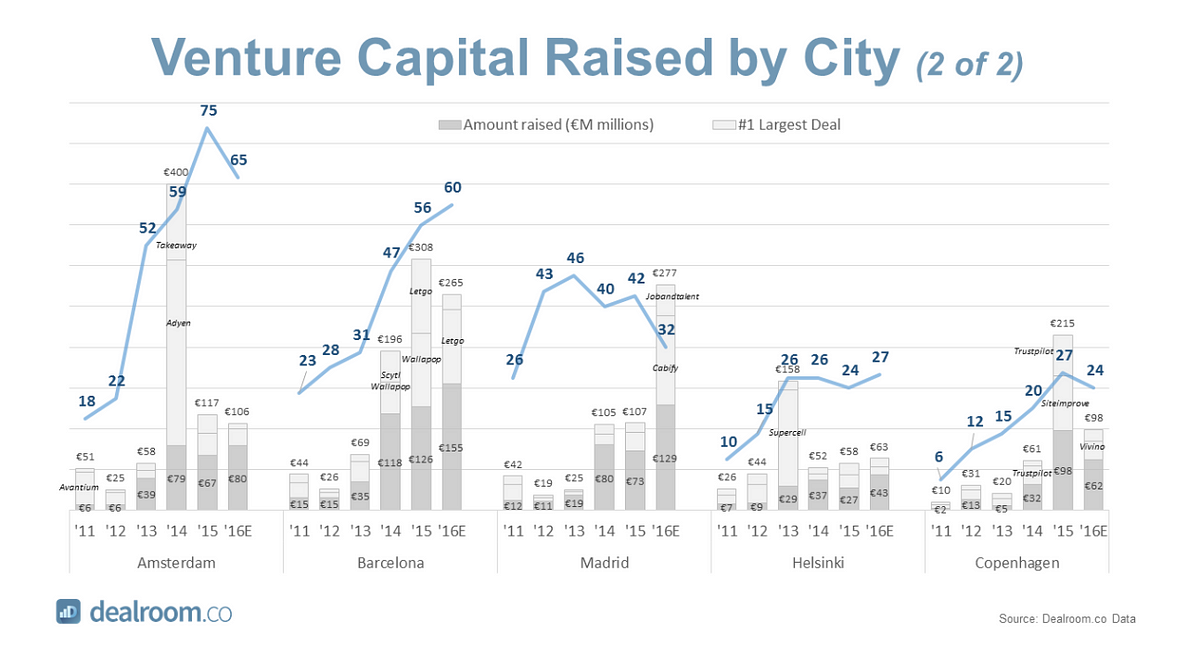Six Things You Should Do Before Building Your Product
Products, services, delivery-, wholesale- or resale-businesses, software as a service, subscription based models — all business models have one thing in common: they are about a market that demands something, and this market consists of people. Which means whatever you are offering, to make it a success it needs to be a good fit with what people want and what they are expecting. More than simply covering you customer’s basic needs, it needs to be fulfilling and, at best, exceeding their hopes.
The power and disadvantages of opinions
Opinions are important, they help us to navigate through life. Especially when you have a vision. Your opinion drives change, it can disrupt markets and motivate people. These opinions are valid and necessary, but they can stand in the way of learning and improving.
For an innovator it is easy to become tangled up in your own bias. It is human nature. Especially startups are prone to get carried away in their own bubble of enthusiasm. History is full of failed companies that didn’t see coming what killed them. Guided by opinions, they fearlessly ignored all indicators telling them about the reality until it was too late. Whenever a business has failed in an economy, it had always to do with an opinion. Investors, stakeholders, founders and CEO’s all have opinions and they all made decisions based on what they felt was right.
Opinions were the compasses that steered ships into safe harbours or hidden icebergs. Still, having a feeling you are doing the right thing can be terribly misguided, if you lack the necessary information to make a good decision. How do you break out of this bubble?
What you need are better informed decisions. Here are a few points which will help you making improved decisions:
1. Don’t start with an idea
You have heard it before: “Anyone can have an idea.” Right — but does it not depend on how you execute it? Or the team and a great masterplan for planned features? In truth, there is more to this: A good idea proves to be a great one once people start using your product or service. Which is a long way coming.
Begin with something bigger than the idea. Begin with a concept. It is not a plan of what to do when, or which feature to build first, but a framework of an idea. A concept includes answers to important questions. It is not all carved in stone and it should certainly not be rigid, but it should represent your vision. And this vision should capture things like a core market and room for expansion, a core audience and a reason to buy and a reason to use your product — again and again.
Only if your customers are building a lasting relationship with your product or service, they want to come back. They don’t disappear after an initial sale.
How do you know if people want to use your product, before you even have a product out there?
2. Ask honestly for whom are your making it
The first and most important question you need to answer is for whom you are building your product or service. Maybe you discovered a missing element in a market ripe for disruption. Or you had an idea that perfectly fills a niche in a crowded market. In either case (and every other case), you need to carefully consider who will use your product. Inevitably this leads to the question of who these people are and what motivates their own decision patterns.
Customers are not just consumers, they are people like you and me. People with their own circumstances in life, their context and social environment that surrounds them. These people have a value system based on trust and good experiences. They are looking for friends, in people as well as in products. So you should ask yourself: is my product, my service, a really good friend of the people it is for? Or is it just about making money?
3. Work on overcoming your own bias
What are those people thinking? What is going on in their heads? What are they hoping for? Sit together with exemplary people who could be your future customers (not your sister or boyfriend). Let them use a competing product or service and watch them doing it. Talk to them, ask them about their experience.
Analyse your competitor’s products for strengths and weaknesses. Figure out how these weaknesses or strengths correspond with people’s behaviour. Put them on a linear customer journey map. You are finding the reasons why people like or don’t like using these products or services.
Try to gather as much information as possible, but constantly sift through it and search for patterns and clusters of indicators for what’s going on in people’s heads.
You arrived at your opinion about a subject for a reason. It didn’t come out of nowhere. So you formed a hypothesis about a situation or need and now you need to confirm it is true . Find and collect evidence that proves this potential. The tools you have are the Internet, social networks, survey forms with incentives, interviews and user journeys in person — basically everything that helps you finding genuine answers.
Don’t just ask people what they think of your idea. Even more crucial: Don’t ask people what they would want. This would force people to think in abstract terms of an innovator and disruptor. To have a vision is your job, not theirs. Ask people what they are missing instead. Ask them how they feel using something they already know. Ask them about what they could change, if anything, to make something better. Ask them which qualities they are looking for in a product or service related to what you are about to build.
It is a lot of work, but you don’t have to do it all yourself:
4. Hire a product specialist (UX) together with developers
First, let’s get something out of the way: UX is not an afterthought, a process you apply after you built your product. That would be the worst of all outcome, because it means you are making experience design decisions without having any information to base them on. You would build a product based on guessing instead of knowing.
To be fair: UX is not a straight forward, fully outlined and predefined process. There are many models floating around of what UX should encompass. In its best form, UX will help you define and building the product. UX does not begin by testing something you already built, it starts with your concept and a number of ideas you want to have confirmed.
The hypothesis and validation of hypothesis is the most important toolset you have. A good UX consultant or product designer should begin by looking at your concept, at potential functions, and they should search for evidence in the market that these features are expected status quo or hold room for improvement. They should be looking at competitors, at user behaviour patterns, also at established paths, to figure out what is going on and why people are doing what they are doing. Once you find what drives people to do something, you have a better chance of redefining it as a well implemented feature.
You need someone with Design Thinking and UX experience aboard to help you plan your product features. You should regard them as developers and let them be part of your team that will define the product. Bringing in a UX person from the start will be guiding your team to find the right questions for the answers you are looking for, to better evaluate the importance of planned features, before investing time in building them.
5. Build small, then test, expand to larger territory, iterate and repeat the process
Once you have a set hypotheses you want to check out, start building the smallest possible array of something that does just what it needs to do. This is not a full product and it should not be perceived as such. It should consist only of elements necessary to let a user go through a task to achieve what they want to do.
To test a hypothesis, you can use a deck of cards. Or it can be a row of sticky notes with steps on a white board. It can be set of actions in a form with radio buttons or check boxes. It can be an interactive set of wireframes. The important part here is that you are testing flow, not a static image. What it should not be is a high-res user interface. Anything that helps you tell the story to guide a user through the journey of accomplishing a task is good and helpful. So if you need the colour red to indicate a state, use red. But if you don’t need red, don’t use it.
From there you can evolve the results into your minimal viable product — a term that has been stretched broad and thin to justify the presumed necessity of fully built products that only lack nice-to-have features. It shouldn’t be the most minimal product you get away with. Think of it as the combined core features, determined in relevance by the reasons you found, why people would use your product in the first place.
For an example, if you are building a flight booking app and you found that one thing that people really want and no one is delivering it, build this feature first and have people using it, then move to build everything around it.
6. Be ready to accept extreme changes
Here comes another potential pitfall: It is very easy to slip back into your own bias mode, thinking what you want, or what you think is best, is actually best for the product. It is so easy, because you are smart and you have already learned quite a bit about your product and its market. What you can’t know is the stuff that is not yet in your head.
You will come across things you did not anticipate. Your view of what is important and what isn’t may be shifting balance. Suddenly a feature you thought was essential turns out to be off the radar for your target group. It could become irrelevant, or it could go the other way, rising from a small thing to a powerful feature. Either way, you have to brace yourself for big changes.
In retrospect, after successfully launching and selling a product over a period of time, you may think that a lot of your team’s decisions were obvious. And you will think, perhaps, how foolish you were for not having seen the path it has taken. But that is only how it looks in retrospect. In reality, you couldn’t have made these decisions without outside influence, to arrive at where you are then.
Admitting misconceptions is almost as hard as admitting mistakes. But realising that what you thought is important is not, and saying “no”, leaving those beloved features behind — this is probably the quintessential element that will decide over success or failure of your venture. Be bold and leave stuff away. Say more “no” than “yes” to features you want, and focus on what people showed you they care about. Then make those things, but in an unexpectedly great way.
It is what made every great product ever made a stunning success.







